The Paris Catacombs are a real curiosity: the bones of about six million people have been lying under the 14th arrondissement of Paris since the end of the 18th century. This amazing ossuary installed in the underground galleries of Paris is world-famous and welcomes more than 500,000 visitors every year! But what is the history of the Catacombs? I tell you everything in this article…
Summary
The history of the Catacombs of Paris
The development of the old quarries
The ground of Paris is a real gruyère! For a long time, stone was extracted from it and used to construct many buildings in the capital: nearly three hundred kilometers of galleries extend under Paris on three levels. But between 1774 and 1776, there was a series of collapses of the Parisian ground, the most serious of which took place at the level of the Denfert-Rochereau street where 300 meters were engulfed! So much so that in 1777 Louis XVI created the General Inspection of Quarries whose mission was to monitor and consolidate the disused quarries.
The problem of the Parisian cemeteries
At the same time the Parisian cemeteries posed a problem: with the expansion of Paris, the cemeteries formerly located on the outskirts of the city found themselves included in the city. In addition, the increase in population, as well as wars and epidemics, caused an explosion in the number of corpses to be buried. It is estimated that at the end of the 18th century, the floor of the Saints-Innocents cemetery located in the heart of Paris was 2 meters higher than the street level! The sanitary situation in the area became critical: the water from the wells was unfit for consumption and more and more diseases were spreading. The problem was such that in 1780, under the pressure of the thousands of corpses in a common grave, the wall of a cellar next to the cemetery collapsed!
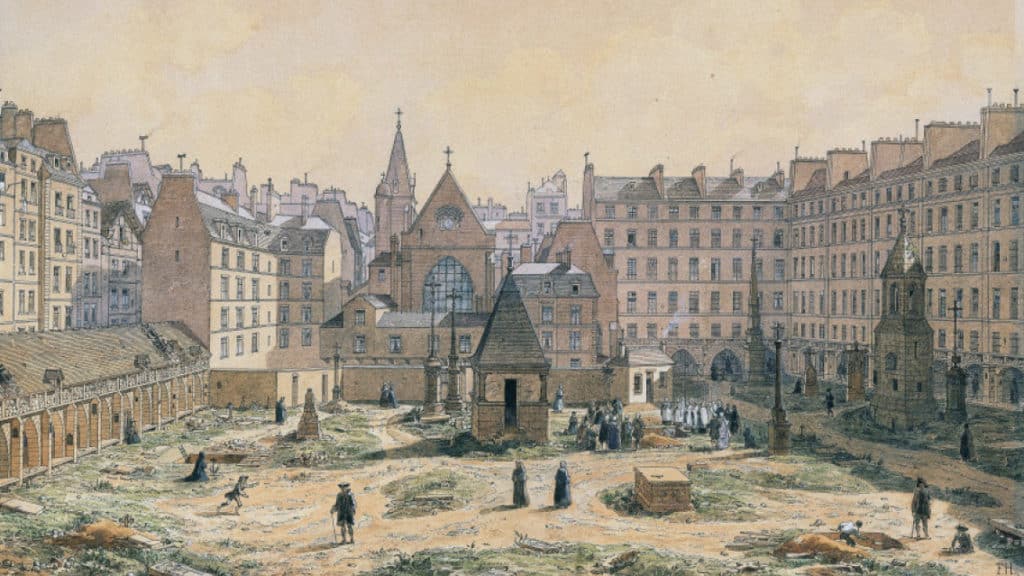
The transfer of the bones to the catacombs
It was then decided to close the cemetery, which was left abandoned for five years until 1782, when the project was born to use the old quarries, now consolidated, to create an ossuary. In 1785, the first arrangements were made in the underground quarries of the Tombe-Issoire to accommodate the bones and at the end of the same year, the transfer of the bones began. In the evening, for fifteen months, funerary processions accompanied by priests crossed Paris and then, at 21 Avenue Réné Coty (where the catacombs now exit), the bones were thrown into a well where men collected them and took them to rooms in the galleries where an engraved plaque indicated the origin of the bodies and the date of the transfers.
The success of the operation led the authorities to extend the measure. After the Saints-Innocents cemetery, several other Parisian cemeteries were emptied. In total, 17 cemeteries, 160 places of worship and 145 monasteries and convents were added to the catacombs, which now hold more than six million remains, making it the largest visited necropolis in the world!
Did you know?
Among the many anonymous people who rest in the catacombs, there are some celebrities from French history such as Nicolas Fouquet (Louis XIV’s superintendent of finance), Colbert, Rabelais, Jules Hardouin-Mansart, Racine, Blaise Pascal, Maral, Lully, Danton, Robespierre, Lavoisier but also the 1343 people guillotined under the Terror at the Place de la Concorde! Mixed with millions of other remains, the bodies of these “illustrious” people could never be identified.
The opening of the Catacombs to the public
Very early on, these catacombs intrigued, starting with the nobility. As early as 1787, the Count of Artois, the future Charles X (and the founder of the Bagatelle castle), went there in the company of ladies of the Court. The catacombs were opened to the general public in 1809 when Louis-Etienne Héricart de Thury, the head of the quarry service, organized the first visits and “staged” the tour by lining up bones and having macabre quotations engraved on the stones.
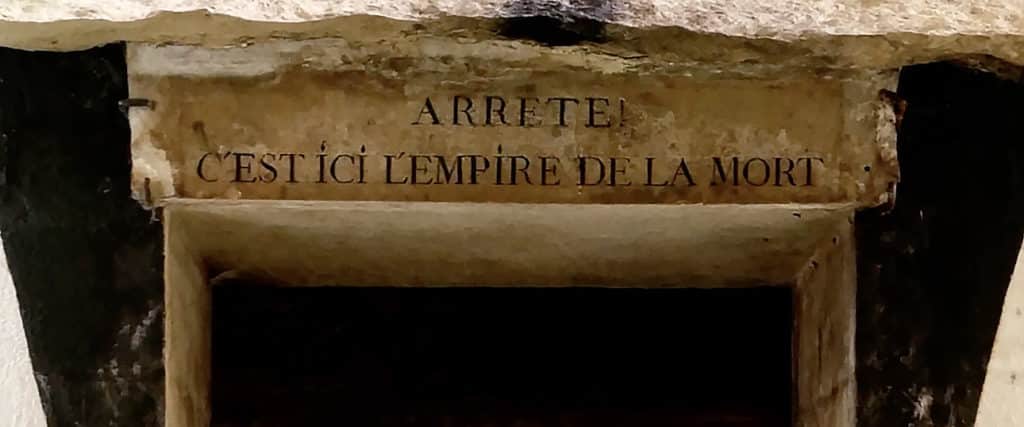

Following outbursts and damage, the visits were forbidden for a while, but then resumed at irregular intervals. Among the most famous visitors were the Austrian emperor François I who visited in 1814, Napoleon III in 1860 and the photographer Nadar who made a report there the same year.
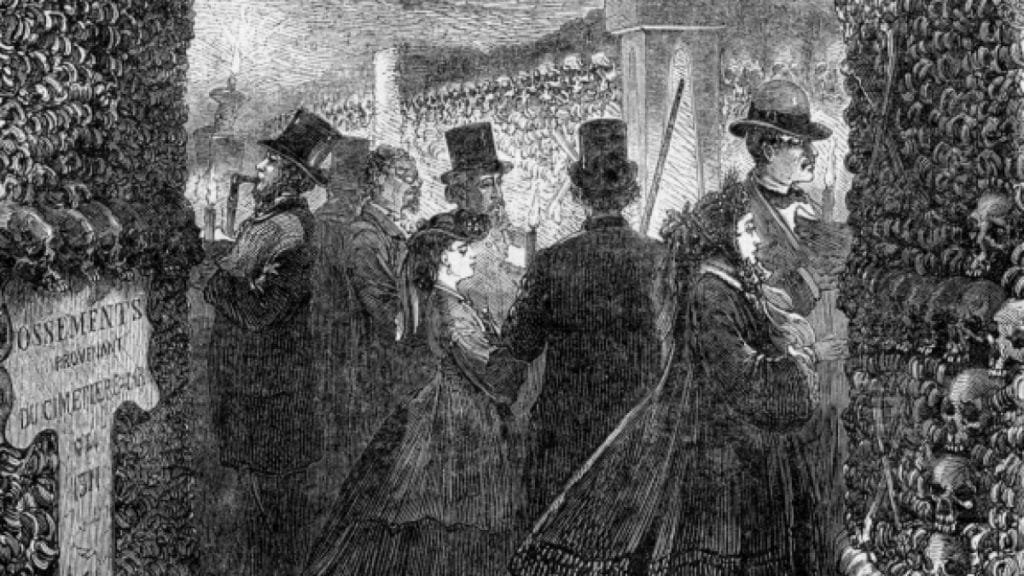
Did you know?
The name of catacomb is inappropriate because this place was never used as a direct burial and has no sacred character. It is therefore not an underground cemetery with its tombs and funeral monuments. The name catacomb was given by analogy with the necropolises of Rome, but the official name is “Ossuaire municipal de Paris”.
In the same way, the whole network of old quarries is sometimes wrongly called “catacombs”. In reality, only the part that constitutes the ossuary and that is cut off from the rest of the network is called that. In the other galleries you should (normally!) not find any bones.
Visit the Catacombs
Today the catacombs are part of the Paris Musées network and are open to everyone but it is better not to be too claustrophobic!
The visit starts on the Place Denfert Rochereau at the level of one of the octroi buildings (remnant of the Fermiers Généraux wall) built by Claude-Nicolas Ledoux. After descending 130 steps, you can access the tour, which stretches over 2 kilometers and ends on avenue René Coty. The visit lasts at least 45 minutes. Here are some pictures of what awaits you!

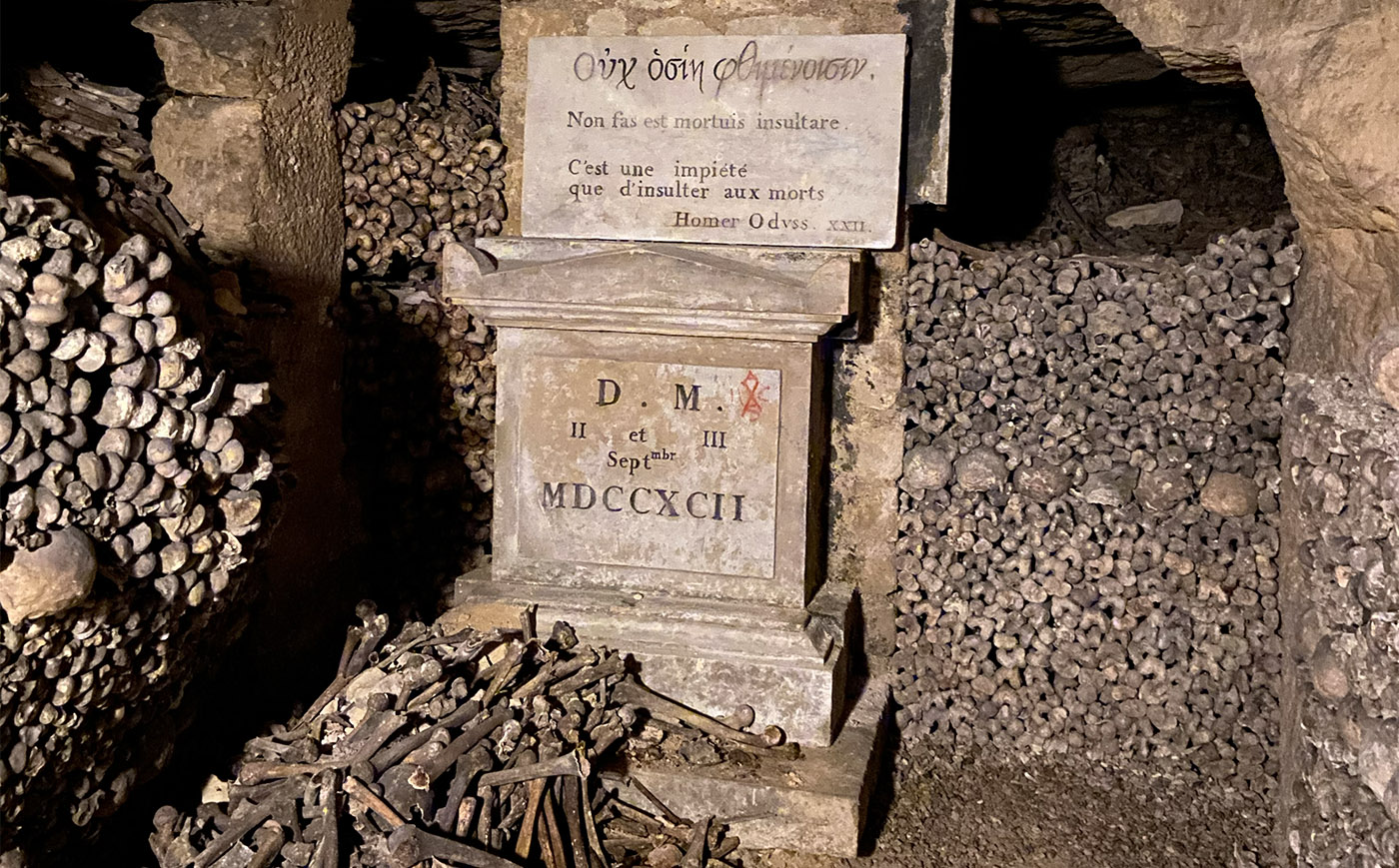

During the guided tour, it is also possible to discover some areas usually closed like the Port-Mahon gallery, sculptures made by a veteran of the armies of Louis XV between 1777 and 1782 while he was working at the inspection of quarries. After his days of work, he made a sculpture of the fort of Port-Mahon, a town in Menorca where he was a prisoner for a time.
Useful informations
Adress:
Colonel Henri Rol-Tanguy street
75014 Paris (France)
Opening hours:
Tuesday to Sunday
9:45 – 20:30
Last admission at 19:30
Website:
https://www.catacombes.paris.fr/en
Prices:
29€/ 27€ (audioguide included)
5€ (-18 yo)
Special fare for ‘last minute’ tickets
14€ / 12 € (reduced rate)
Did you like this article? Pin it on Pinterest!




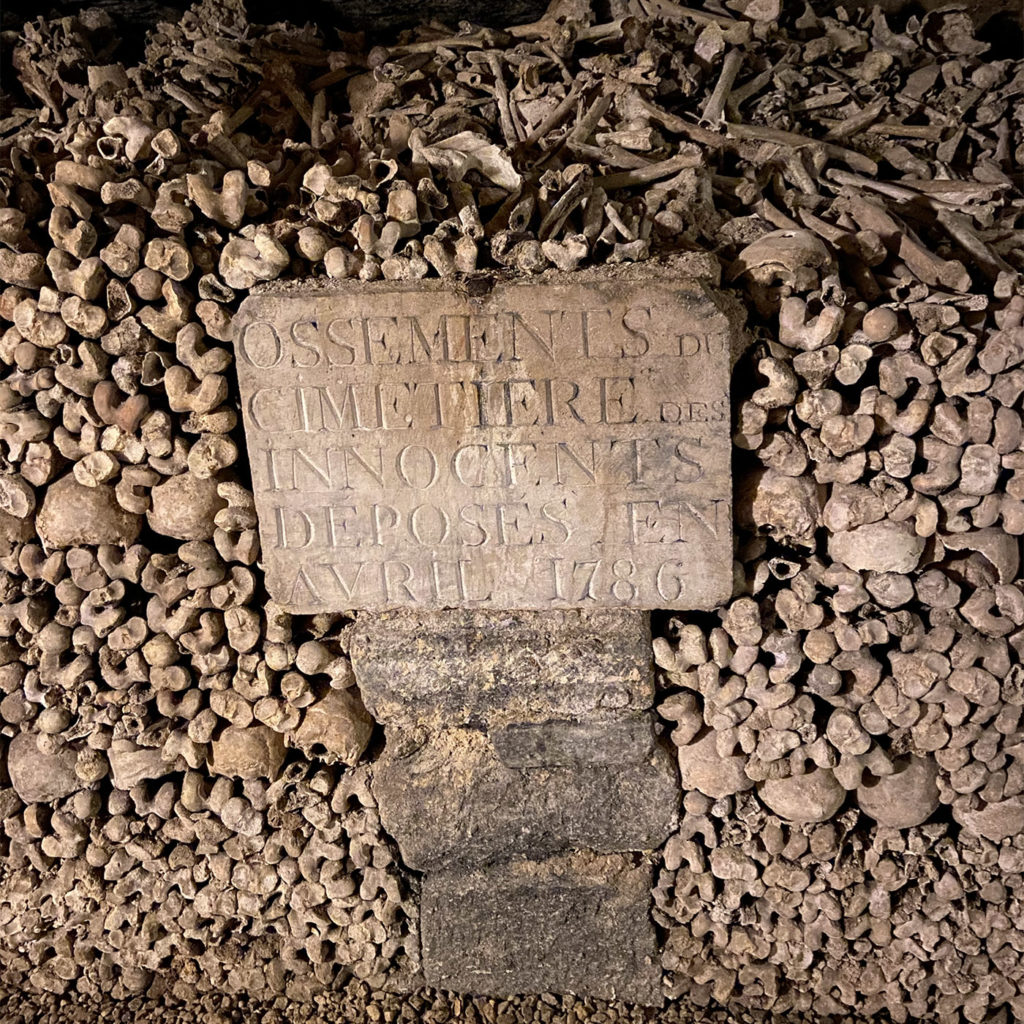
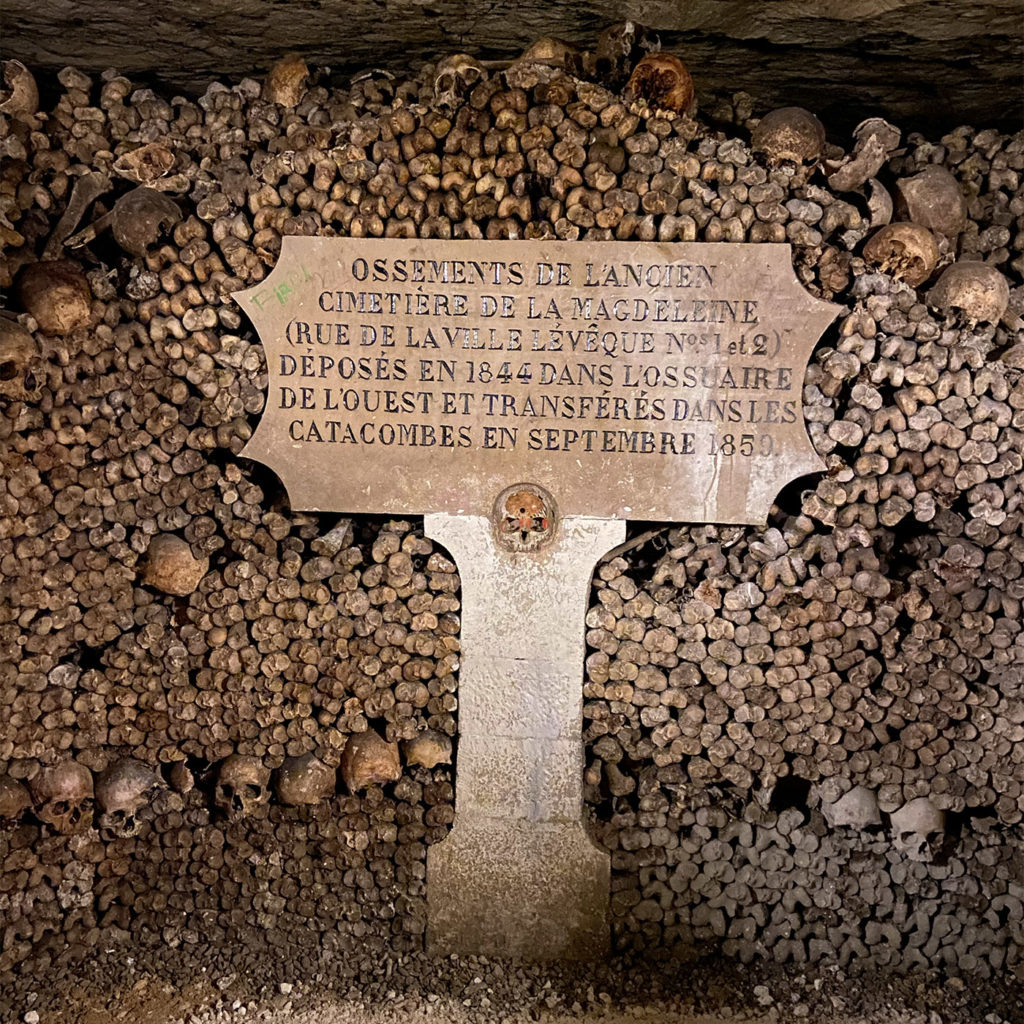

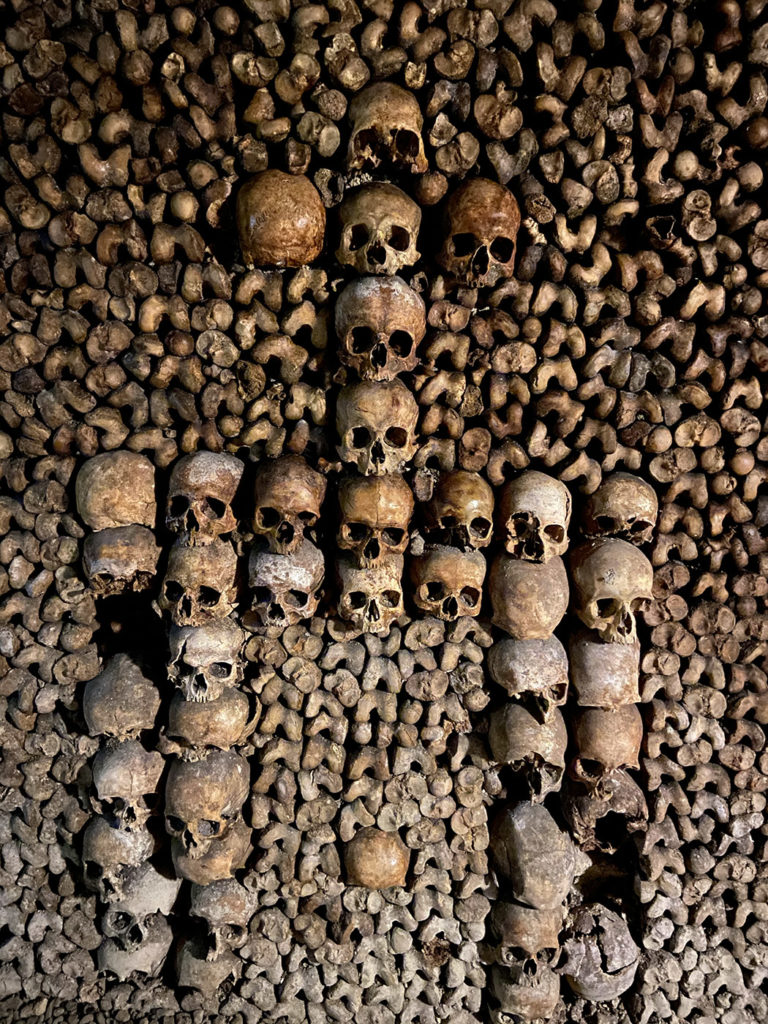

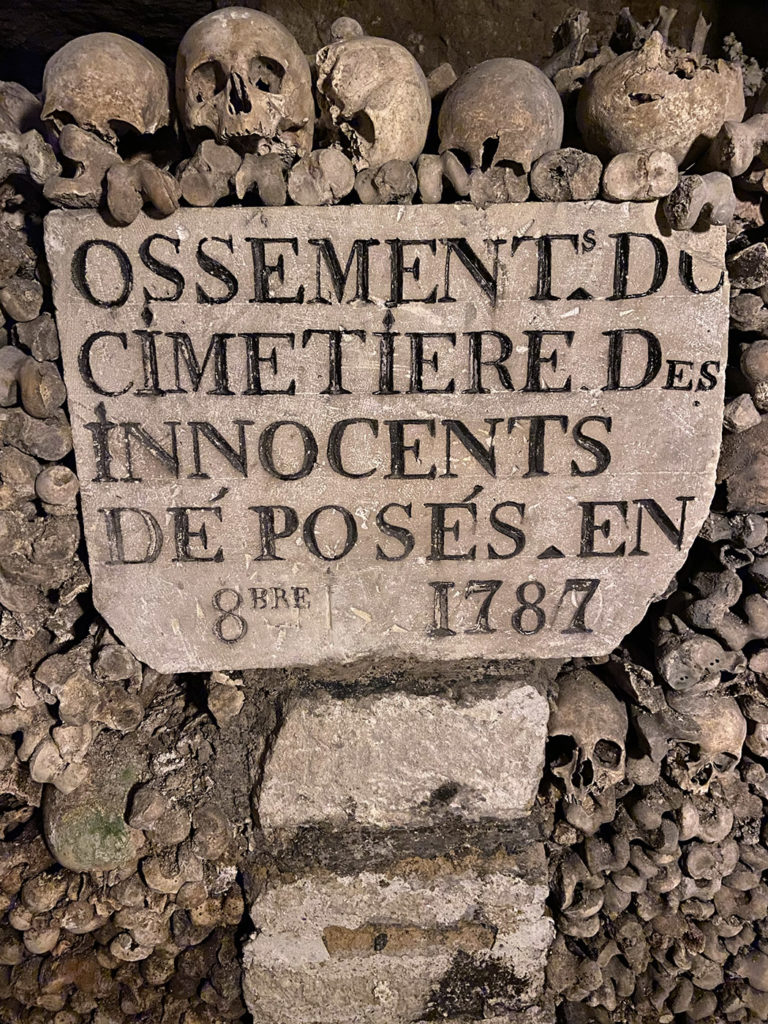
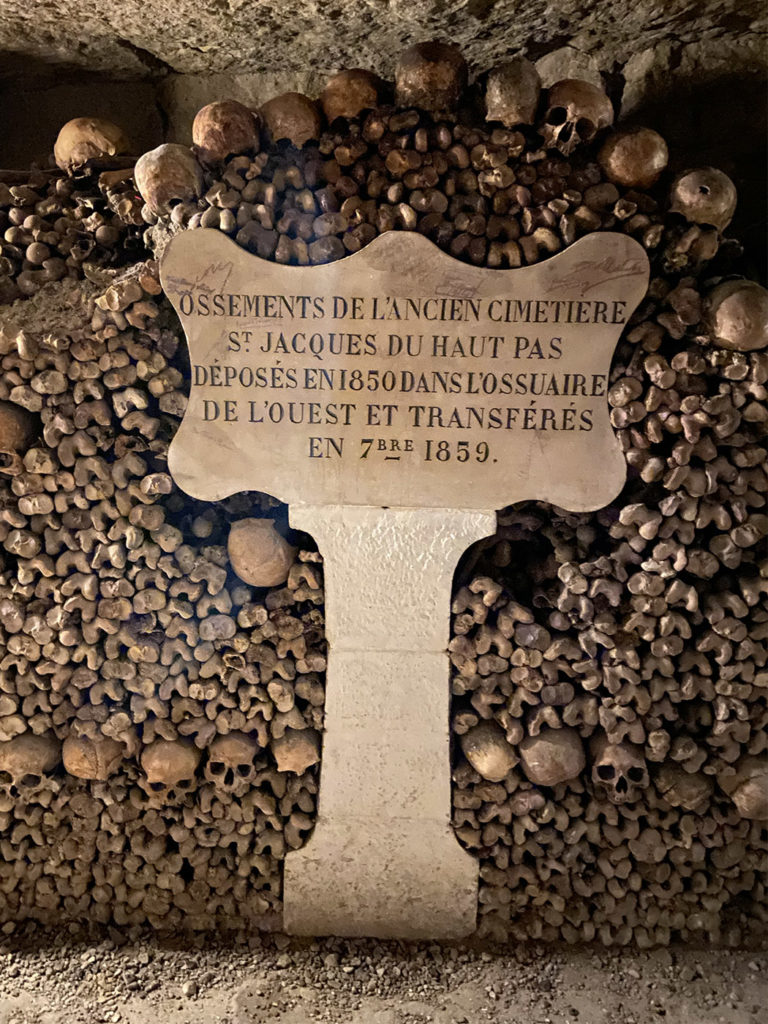


No Comments
Leave a comment Cancel